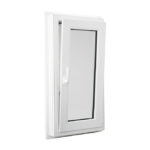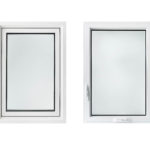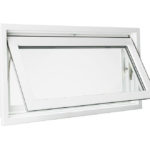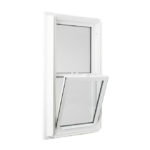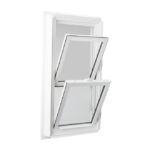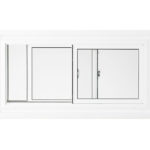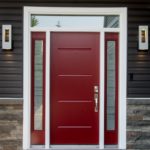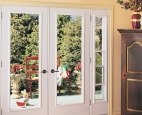What is NAFS?
NAFS is the North American Fenestration Standard (officially known as
AAMA/WDMA/CSA 101/I.S.2/A440) that is used in Canada and the United States. It is a new fenestration standard to test and evaluate the performance of windows, doors, and skylights.
The 2010 NBCC now includes the new NAFS Specification for Windows, Doors, and Skylights – AAMA/WDMA/CSA 101/I.S.2/A440-08, this replaces the 2000 edition of the A440 standard. The old A440 standard did not have a requirement for doors.
How does NAFS affect me?
NAFS is the window and door requirement of the National Building Code for residential housing and requires you test and properly label windows and doors in accordance with the standard and ensure doors and windows are rated to perform in the area they are being installed.
What about products made outside Canada?
The Canadian supplement is more stringent than the US; so many US manufacturers do not understand or meet the Canadian Building Code. That doesn’t mean they would not meet NAFS but they need to test, label and be able to prove they meet the NAFS supplement of the National Building Code of Canada.
What kind of projects will it affect?
Typically it will affect all residential projects that fall under Part 9 (Residential) of the National Building Code that require a building permit. All doors including commodity and utility doors will require a NAFS label if used in areas that require NAFS conformity.
What type of construction projects requires NAFS testing?
All projects require NAFS certified windows and doors or have an Architect and/or Professional Engineer certify they meet the requirements of the building code for the location they will be installed.
How does NAFS specifically affect entry doors?
While there have been testing requirements for steel entry doors and flush wood doors in the building code for over 30 years, they have been largely ignored and not enforced. All side-hinged entry doors are now included in the NAFS standard and by referencing the NAFS-08 and A440S1-09 in the NBC 2010 and provincial codes all entry doors have to be tested to NAFS-08 and A440S1-09 to comply with the building code. This will require that side-hinged entry doors be tested and labeled for air infiltration and exfiltration, water penetration resistance and structural wind load resistance.
Do steel doors perform better than fiberglass?
Kohltech tested steel and fiberglass slabs with our patented high performance sill and both met the PG 100 water rating. The structural performance on a door with a passage set was limited by the slab flexing as listed in the table below. Fiberglass performed marginally better than steel on the structural testing.
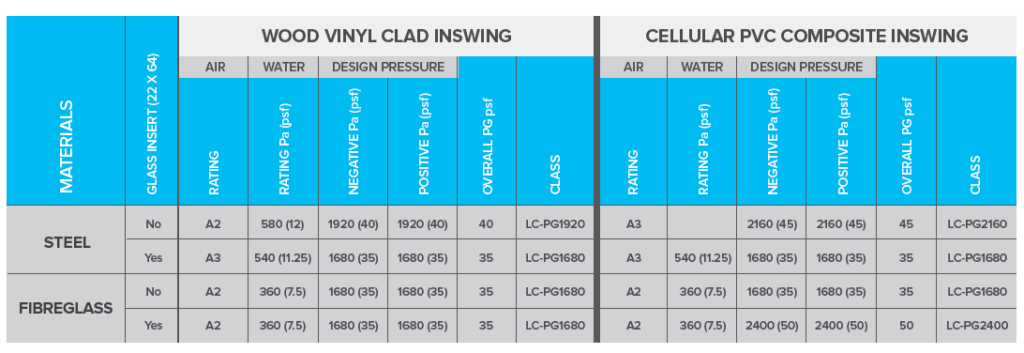
The slab manufacturers are redesigning the slab construction to achieve better results without the need for multipoint or more costly heavy duty slabs.
What do the new standard numbers really mean with respect to the actual door?
In general, it means that in order for a door system to meet the new code it must be physically tested for wind infiltration, water infiltration and uniform load structural testing. Loads can vary by province and city so it is important that you understand the requirements in your local selling area. Loads can also vary whether the building is considered to be located in an “open terrain” area or in a “rough terrain” area. “Open Terrain” conditions have higher test pressure requirements than “Rough Terrain” conditions. There is also a component for Height off the ground since wind pressure increase with height.
Does the ER or U value affect the NAFS rating?
No, Energy Rating (ER) and U (Inverse of R) value are the indicators of thermal performance and only affect the Thermal rating (outlined on the top section of the label).
NAFS is based on Weather Performance: water, structural and air performance (outlined on the bottom section of the label).
Will the ratings change by product?
Yes, the Energy/Thermal performance will change significantly by the type of glazing, outlined in the chart below.
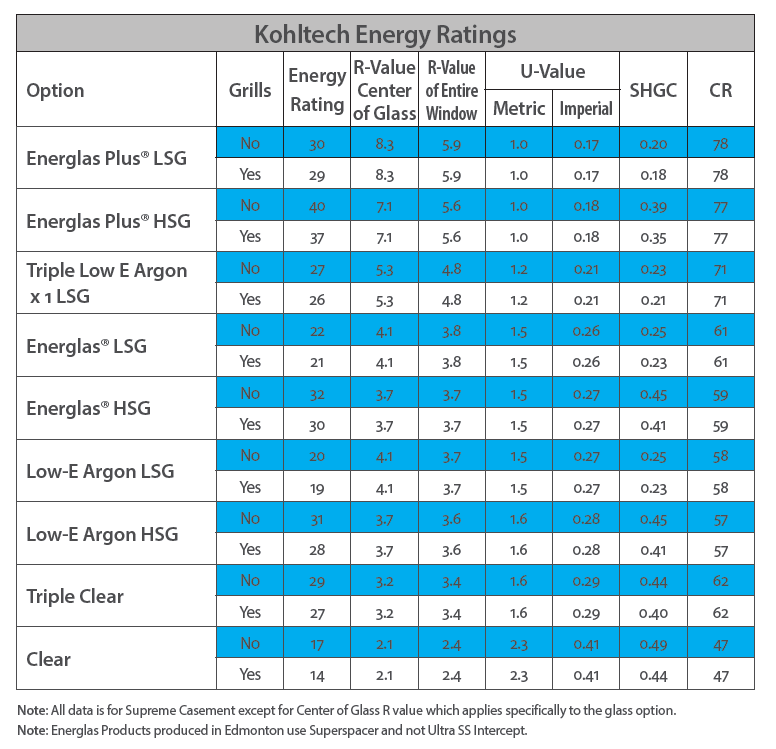
The Weather performance will also change by type of product; casements, single hungs, double hungs, I/S. O/S, etc.
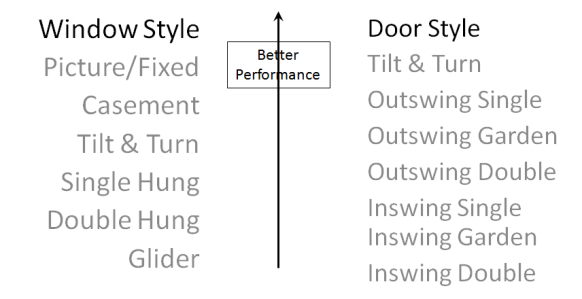
The above chart shows the relative performance but each product needs to be tested to determine the actual rating and the rating is only good for the same size or smaller. The rating is also not applicable if the product is not manufactured the same way it was tested or if a sub component is changed. The advantage of CSA or certification companies is that they certify, verify and audit the manufacturer and the product to meet the requirements.
How can I confirm that a door or window meets NAFS?
There are 4 elements to confirm a door meets the NAFS standard:
- Determine if the Province or jurisdiction requires doors and windows to meet the NAFS requirement of the 2010 National Building Code. All Provinces except for Quebec require NAFS Certification. Many Provinces are just starting to implement NAFS certification so the level of enforcement varies by area. NAFS is here to stay so the sooner you educate builders, building officials, consumers and contractors the better. We are starting to see product disallowed because they can’t prove NAFS certification.
- Determine the requirements for your area. Fenestration Canada has developed a “Fenestration Calculator” to make it easier to find the NAFS requirements for your area. This “Fenestration Calculator” can be found at http://www.fenestrationcanada.ca/calculator.
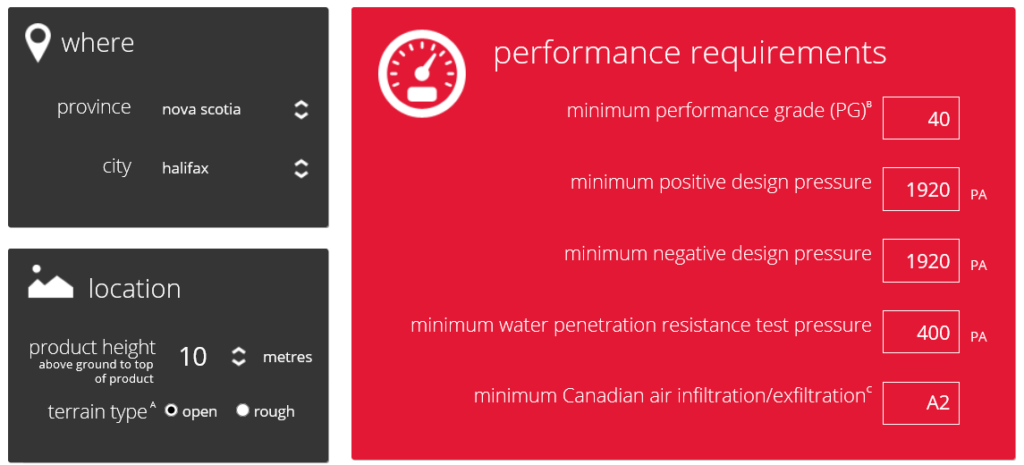
The above example illustrates the performance requirements for Halifax. The performance requirements for Halifax are:
Positive Design Pressure 1920 PA
Negative Design Pressure 1920 PA
Minimum Water Resistance Test Pressure 400 PA
Air Infiltration A2

- Confirm the values from product label exceed the requirements for your area.
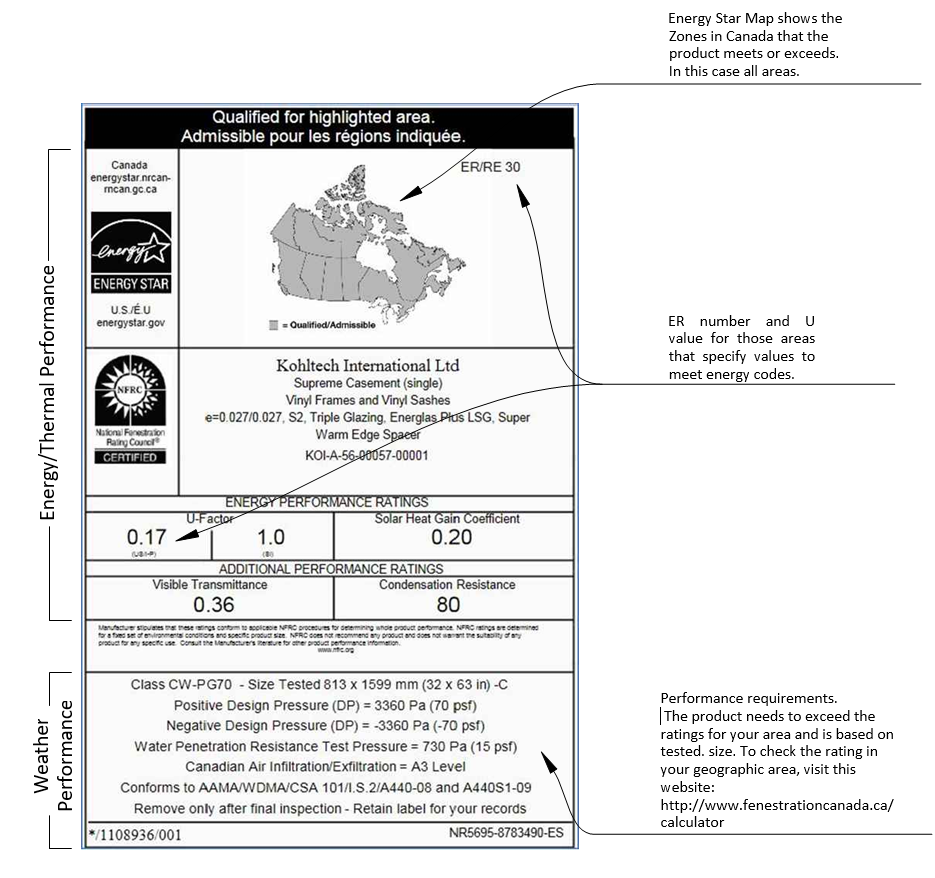
- Leave the labels on until construction is complete or keep the labels in a file for future reference or in case the local buliding official needs a copy.
What terrain type will my product have to meet?
There are two terrain types defined in the building code, open and rough terrain. The NBC 2010 definitions for open and rough terrain are: Open terrain – where open terrain is level terrain with only scattered buildings, trees or other obstructions, open water or shorelines. Rough Terrain – where rough terrain is suburban, urban or wooded terrain extending upwind from the building uninterrupted for at least 1 km or 20 times the height of the building, whichever is greater. The final decision on the terrain type in an individual location rests with the local building code official. Working with the local officials to establish the terrain types in the regions you sell will clarify the performance levels required.
What performance values are required when testing for NAFS in Canada?
The performance values required for windows, doors, and skylight vary by location, terrain, and height above the ground. The CSA A440S1 includes the data and calculations to determine the performance requirements by location, terrain, and height. These calculations have been put into an online tool to determine the fenestration performance requires on the Fenestration Canada website http://www.fenestrationcanada.ca/calculator .
How can I confirm that my products meet the Building Code?
The product has to be labeled to identify the performance levels achieved in the test. The performance requirements for fenestration products to comply with the building code are defined in the CSA A440S1-09 standard. These performance requirements can be calculated on the Fenestration Canada website by using their fenestration calculator. The calculator requires the location, terrain and height above ground to determine the local performance requires. Once the local performance requirements are known they are compared to the labeled performance of the product to see the product meets or exceeds the local requirements (see http://www.fenestrationcanada.ca/calculator ).
How do I label my mulled products according to NAFS?
The NAFS standard requires that when products are mulled together that the mulling joint be tested and labeled. Fenestration Canada has developed a voluntary guideline document outlining how to label mulled products. This document is available at www.fenestrationcanada.ca.
What is the difference between DP and PG?
Both refer to the performance rating of a product. Performance Grade (PG) is typically used in Canada while Design Pressure (DP) is typically used in the US. NAFS is a North American Standard and is based on the Design Pressure (DP) concept. In the US water performance is always 15% of the structural performance and the requirements are in a DP rating. In Canada water performance and structural performance are separate requirements depending on the area where product will be installed and the requirements are in a PG rating.
Is the water rating more important than the structural rating?
Both are important and both are required to meet the code, location will dictate the actual water, structural and air component. We live in an area that has a large coastal impact and the performance calculator, structural and water performances are dominating factors.
